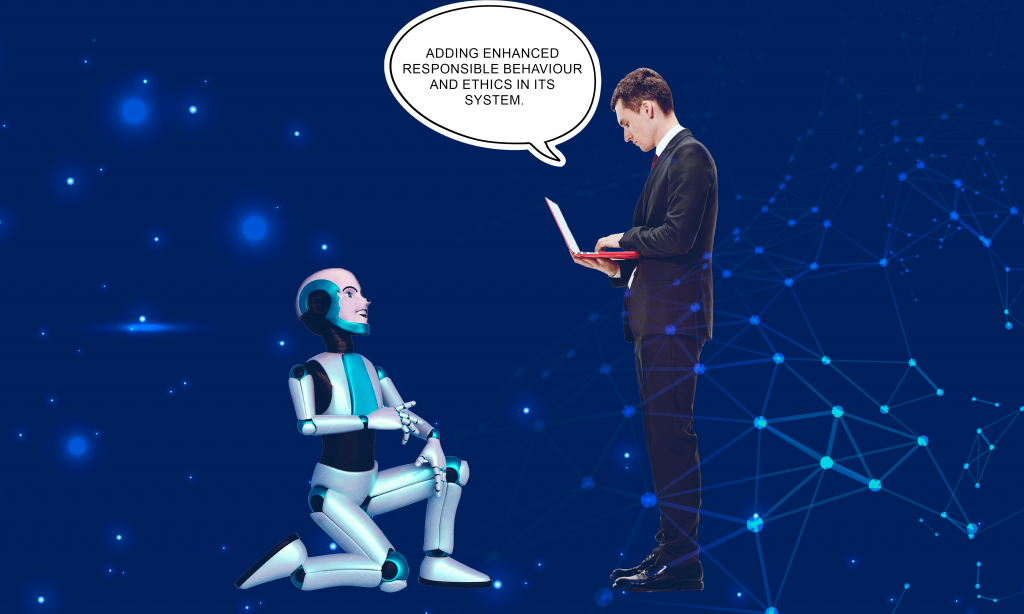A learning management system or LMS is a software platform to manage and administer online training or eLearning. LMS serves as an online platform that helps you deliver and manage training in various formats. In addition to delivering automated solutions, an LMS can also bring into light pedagogical models like blended learning and flipped classroom teaching. Ultimately, the LMS system consists of-
- Admin app- A trainer or instructor can construct, manage, and integrate all training programs through the admin app. The admin app typically involves adjustments and features which allow them to fully customize the training programs.
- An user interface- In the user interface, participants can take an active part and experience what the admin has compiled for them. Participants learn and access the training programs created for them through a mobile screen or a web browser.
Today, more learners are turning flexible and need their learning on-the-go. Therefore, LMSs need to adapt to the learner’s preferences and create a system where they can access courses according to their pace. Most importantly, accessibility plays a huge role in influencing the purchasing decision. The sign-on process should be simple and user-friendly. Also. the learner should be able to get all the information he needs through the homepage. Therefore, a robust LMS system should have various elements such as user access, calendars, communication, assessments, etc.
Features of Learning Management System
The definition of good LMS varies from individual to individual, but every LMS needs to have a certain set of features.
- Mobile accessibility – Any good LMS system should be compatible with mobile (tablets, smartphones). This is especially helpful for courses that require learning outside work hours or for distributed teams where learning can occur between meetings or calls.
- Advanced Security – Generally, corporate LMS solutions include advanced encryption protocols and backup options to guarantee data security
- Gamification – According to a 2018 study, almost 70 percent of students felt “gamified courses” were better than a traditional course. Additional features such as leaderboards, points, badges can be an extra motivating factor for students. Similarly, most LMS platforms are adopting this trend and including gamification elements in their software to stand out from the market.
- Calendar Catalog – Assigning dates for course-related project deadlines or upcoming tests and publishing it online.
- Collaborative Learning – A great system will help to bring everyone together to share their learning experiences. Also, engaging in group discussions, working together, sharing pictures, and so on, are just a few examples of inducing collaboration in eLearning.
- Coursework Grading – Tracking performance over time and assigning grades to students for continuous improvement.
- Ecommerce – LMS with an Ecommerce functionality will be useful for those organizations looking to sell courses. Here, it allows users to set prices for course material, as well as track revenue and manage expenses without feeling the need to integrate an e-commerce back-end.

Role and functionalities in LMS
a. Schools, universities, eLearning providers
Traditional education institutions and schools selling eLearning will be beneficiaries of an online Learning management system. Also, the system is a crucial tool to design and manage online schools and classrooms by adopting effective teaching styles in an ever-connected world.
b. Administrators
The administrator’s role is at the top of the hierarchy with the most power in relation to the entire platform. But this type of admin is different from the administrator who focuses on handling the technical issues of the server instead. On the contrary, this role is an important one which has a vision of the whole LMS.
c. Instructors
Instructors and teachers’ carries out the whole training process, from the creation of the training course, to strategy building and content delivery. In addition, the teacher will have access to everyone student’s progress and reports to provide assessment and keep track of the activities.
d. Students
It proves to be a highly effective approach for students who prefer a flexible environment of learning, unlike the traditional method. Also, it is suitable for professionals with tight work schedules that cannot choose a traditional or face-to-face program.
Types of Learning Management System
1. Open Source vs Commercial
Free, open source software is all about combining user control with affordability. This can turn out to be quite customizable for any organization. However, organizations must have a technical team and necessary infrastructure in place to support an open-source LMS.
Unlike the open source, free LMS, the commercial version comes with easy execution, promising customer service and extra features. The difference is that it is not free. Ultimately, the necessary features and capabilities required decide the cost you incur.
2. SaaS vs Licensed
This is known as one of the user-friendly models, the SaaS LMS comes with a subscription model. Here, the vendor looks after all the operations and necessary upgrades. And the cost is charged on a monthly or annual basis.
The Licensed model is considered a much safer alternative because it provides customization, customer support and reliability.
3. On-premise or Cloud-based
On-premise offers users the ability to customize and take control. This is useful when the organization has a reliable IT team in place to handle and administer the system. Whereas one disadvantage is that it tends to be more difficult to scale than a cloud-based LMS and may be more expensive.
On the other hand, a cloud-based LMS is hosted on the vendor’s server and users can access it through a web server. As a result, this requires much less maintenance because the cloud service provider carries out all the necessary upgrades or changes.
4. Integration
As the need for LMS solutions keeps increasing, one of the most exciting developments is the ability to integrate with other softwares like HRM, Talent Management System, Payroll, etc. Depending on your organization’s need, you can look for an LMS software which offers this sort of app integration.
Final Thoughts
To sum up, evaluating an LMS requires an extensive analysis of all the functions and advantages that each one offers.
There is an increase in the demand for LMS every year as more companies are adopting eLearning. LMSs are confidently, a modern generation of training systems that outperform conventional classroom training in terms of outcome. Evaluating an LMS becomes a necessity in such factors, requiring a thorough analysis of the features each one offers.
Reference: Learn Upon
Image credits: Freepik
For more such content on technology and e-learning, visit our blog.
Create. Engage. Inspire
















